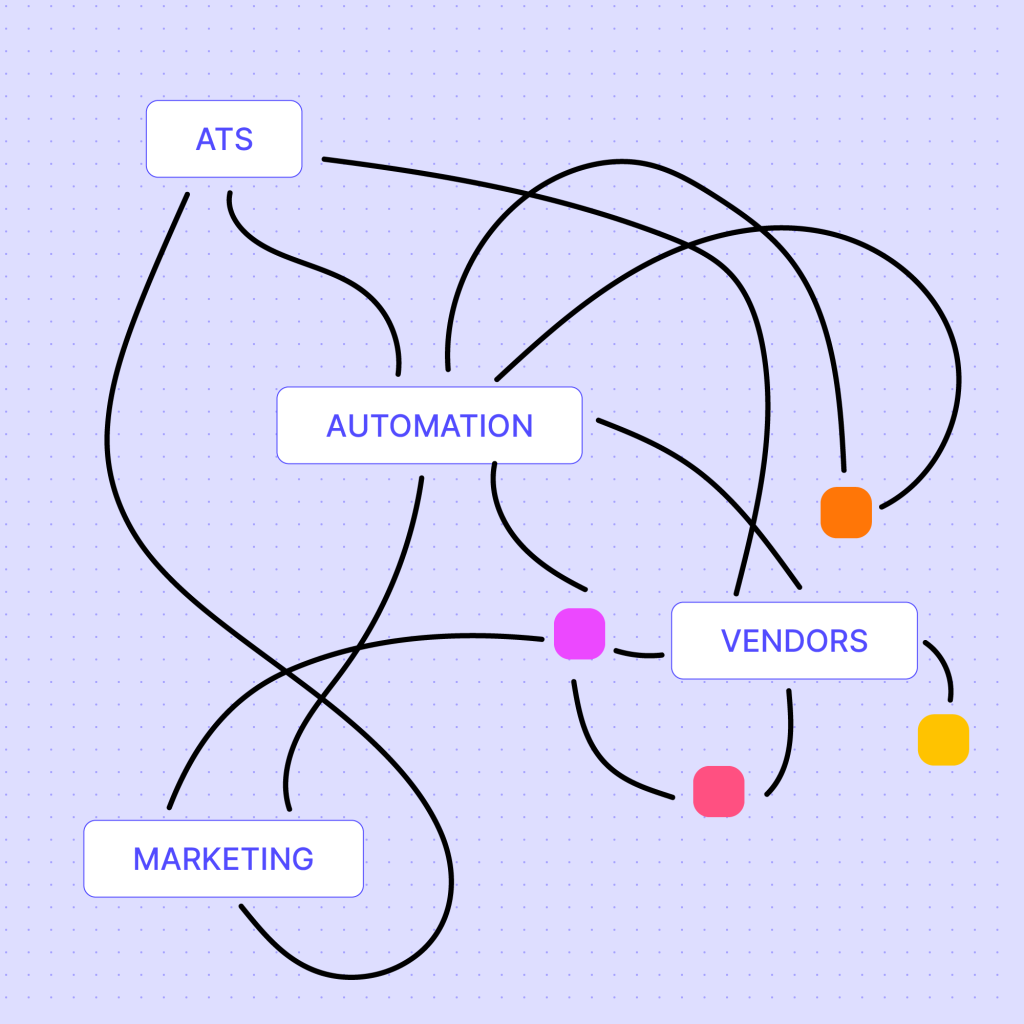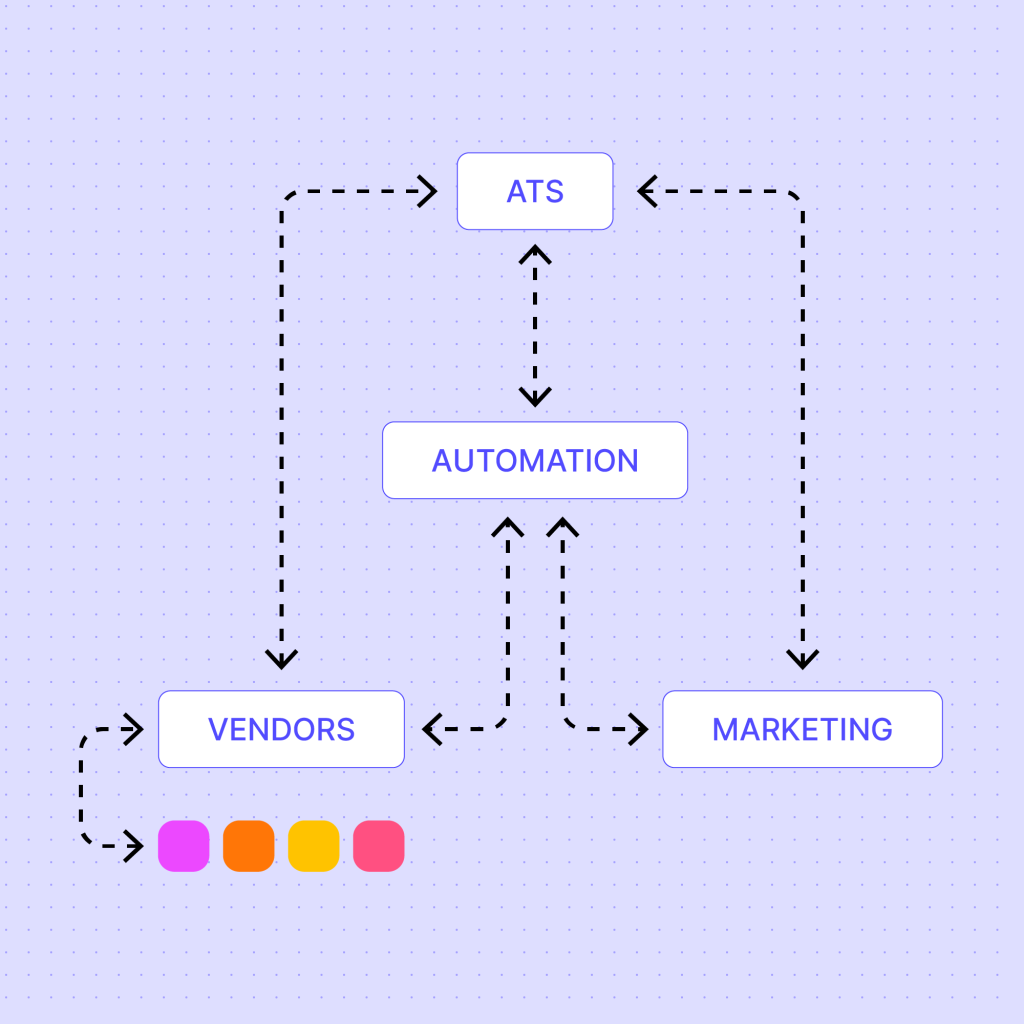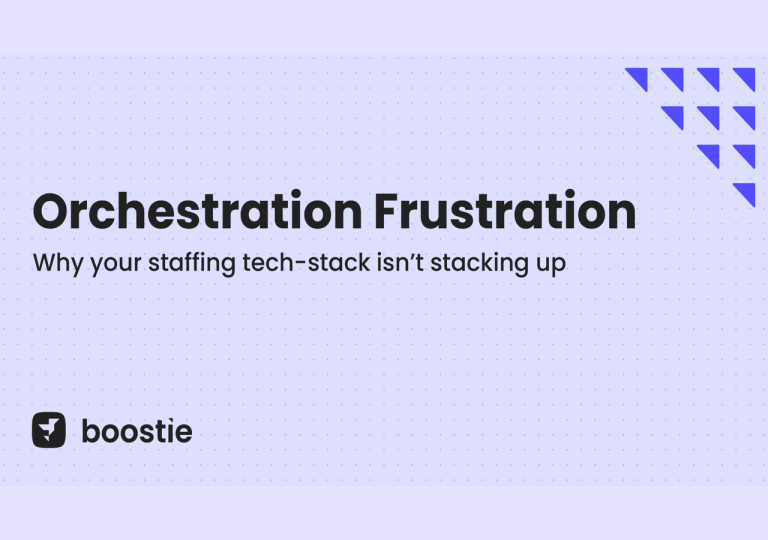This blog was provided to TechServe by our Supplier, boostie.
Digital transformation isn’t plug-and-play. Here’s how to re-align your stack before it stacks against you.
The Promise (and Problem) of Digital Transformation
In staffing, tech tools are everywhere and multiplying fast.
I know this because I’ve built a few of these tools over the years.
Tools for sourcing. Tools for outreach. Tools for screening, nurturing, tracking, automating, marketing…
We’ve entered the era of “digital transformation,” but for many staffing firms, that transformation has felt more like fragmentation.
Despite the spend, many agency owners are feeling the pain of disjointed workflows and confused teams.
Why? Because buying more software doesn’t guarantee better results. And plug-and-play rarely plays well without a strategy.

More Tools, Less Impact
When your stack grows faster than your strategy, here’s what usually follows:
- Duplicate processes across systems
- Low adoption due to unclear purpose
- Messy data from disconnected workflows
- Slower decisions because nothing’s centralized
In theory, these tools are supposed to streamline the hiring journey. In reality, they often create more work, not less.
The lines between tool A and tool B are sometimes blurred which only adds to frustration on both sides of the desk and the person cutting the checks.
So how do we address this?
The Missing Layer: Orchestration
Orchestration isn’t integration. It’s alignment. It’s the intentional design of how your tools, teams, and workflows work together toward a shared goal.
Something I still see is a desire to level-up a tech-stack with no real plan on how it can impact existing and future workflows and processes.
Think of your tech stack like a symphony. Each tool is an instrument, but without a conductor and a score, you don’t get music. You get noise.
Staffing teams need more than APIs. They need orchestration: clear rules, shared logic, and defined roles for each part of the stack.
Start with the Whiteboard, Not the Wallet
I have said this for years pertaining to marketing and automation: the hard work happens on the whiteboard. The implementation is the easy part. And the same holds true for your tech stack.
What this really means is that diagramming a process doesn’t happen in the tool, it happens outside of it. Depending on your tech stack, this can take a few hours or a few days, but the time put in sharpening your plan pays off in spades when you implement your toolset.
Here’s a simple framework to assess and realign:
- Map: List each tool with the people who use it, the process it supports, and the purpose it serves. I like to put these on sticky notes so you can move them around on the whiteboard.
- Scorecard: Identify redundancies, underused tools, and areas where manual effort is still required. Draw lines between stickies and start to understand the overlaps, gaps and those impacted.
- Align: Stack-rank each tool’s business value, not just its features. Does it support a core priority? Does it reduce friction for your team or candidates or clients? This is where you’re critical – if something you currently own isn’t fitting; it might be time to say goodbye.
This is where transformation actually begins.
There is an underlying thought with the purchase of every new piece of tech that ‘it will just fix the problem..’ but the reality is that tools are only effective when they’re used the right way.

Quick Wins for Better Orchestration
You don’t need to blow up your stack to regain control. Start here:
- Assign an internal owner of orchestration (your conductor to stick with the music theme) someone who understands process, not just tools. In my experience this is an operations person who sees what’s going on in your ATS, automation tools, vendors and analytics.
- Build playbooks that connect tools with workflows. Don’t assume automation happens magically.
- Rethink automation as intentional design, not “set it and forget it.” It’s a continuing process that you should keep iterating upon.
- Measure tool impact, not just usage. If it doesn’t drive candidate flow or recruiter efficiency, it might not belong.
Final Thought: Transformation is a Team Sport
Vendors will keep selling transformation as if it’s a product. But in staffing, the real edge comes from orchestration – from building a tech stack that serves your people, not confuses them.
Digital transformation isn’t about how many tools you have. It’s about how well they work together. The best stacks don’t feel like tech at all – they feel like flow.












